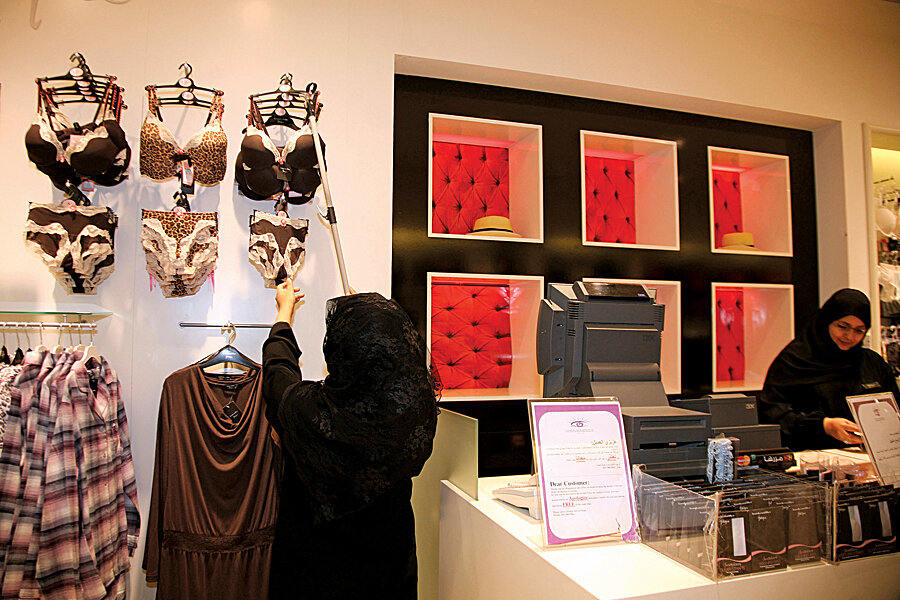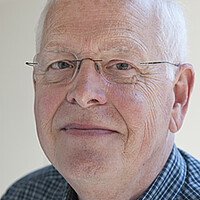Good Reads: From Saudi lingerie sales, to defense budgets, to the most expensive Games
Loading...
A modest revolution in women’s lives has begun in Saudi Arabia because for the first time they are allowed to work in certain retail outlets, writes Katherine Zoepf in the year-end issue of The New Yorker. It is one break in a society that is still rigidly controlled by men, where nonrelated persons of the opposite sex are separated.
The right to work in retail sprang from a June 2011 decree from King Abdullah requiring that women replace men staffing lingerie shops. That was followed by a Ministry of Labor order that shops selling cosmetics, the flowing robes called abayas, and wedding dresses, along with the women’s sections of department stores, move to all-female staffs.
The women Ms. Zoepf interviewed late last year about the change said they were less depressed, isolated, and bored; valued the friends they made at work; and were treated with greater respect by their husbands. But one woman said she found it deeply upsetting that her job selling makeup might raise questions about her morals among more conservative elements of Saudi society.
Pentagon budget in charts and graphs
Dave Gilson in Mother Jones magazine offers “a field guide to just how big the Pentagon budget is – and why it’s so hard to trim.”
Over the Christmas holidays President Obama signed a bipartisan budget deal giving the Pentagon a reprieve from scheduled automatic spending cuts. But Defense Secretary Chuck Hagel says, “Tough decisions will still be necessary going forward in order to achieve the right balance in military capacity, capabilities, and readiness” given a tight budget climate and a scheduled withdrawal of forces from Afghanistan.
Whether you agree or not with the magazine’s critical view of defense spending, the easy-to-grasp charts and graphs offer an illuminating glimpse of the scope of US military spending – greater than the next 10 countries combined. The items are staggering in size and variety including $32.6 billion spent in 2012 for planes and helicopters, $4 billion on dairy and eggs, and $152 million on footwear.
Museums become temples of delight
Benjamin Ives Gilman, the head of Boston’s Museum of Fine Arts, argued less than a century ago that museums had a holy purpose and were essentially a “temple.” The Dec. 21 issue of The Economist offers a look at how museums have changed since then into institutions, the magazine says, that “have to enchant visitors rather than lecture them.”
The enchantment approach seems to be working. The range of topics museums cover has broadened dramatically, and their numbers have increased globally from 23,000 two decades ago to at least 55,000 now. In 2012, about 850 million Americans visited a museum, more than the number who attended all major league sporting events and theme parks. While contemporary art is one of the biggest draws for visitors, the magazine says there are a number of oddball choices as well, including US museums for bananas, burned food, lunchboxes, and bunnies.
Corruption at the Sochi Olympics
The Olympic Games that begin in Sochi Feb. 6 will cost an estimated $51 billion, making them the most expensive ever, exceeding the $40 billion China spent on the 2008 summer Olympics. Bloomberg BusinessWeek says that “[h]ow the Sochi Games grew so expensive is a tale of Putin-era Russia in microcosm: a story of ambition, hubris, and greed leading to fabulous extravagance on the shores of the Black Sea.”
While the costs for a host nation typically triple between the initial bid and the Olympic opening ceremonies, the bill in Sochi has climbed nearly five times. “It can be hard to determine at which point inefficient and repeated work becomes outright theft, but there seems to have been plenty of that in Sochi,” says reporter Joshua Yaffa.
A new road and railway connecting arenas and the Olympic Village with the mountain resort hosting ski and snowboard events came in at $8.7 billion. Critics claim that would cover the cost of paving the road with a centimeter-thick coating of beluga caviar.
Escaping the community college trap
It is relatively easy to get into one of the United States’ community colleges, which enroll 45 percent of all American undergraduates. But as the January issue of The Atlantic reports, getting the associate degree these institutions theoretically award after a two-year course of study is difficult. The national three-year graduation rate is just 16 percent.
The Accelerated Study in Associate Programs, or ASAP, is designed to help students move successfully through six of City University of New York’s community colleges and provides frequent counseling, financial assistance, and book loans. ASAP assumes that students don’t need just to learn subjects but also how “to navigate academic and institutional challenges,” says author Ann Hulbert. So far the program appears to be achieving its goal of a three-year graduation rate of 50 percent.








